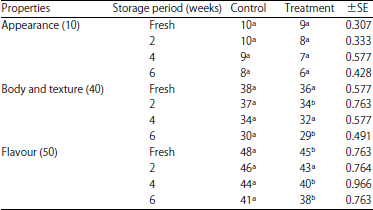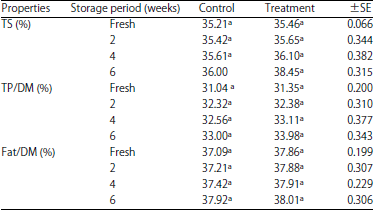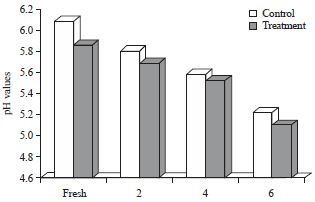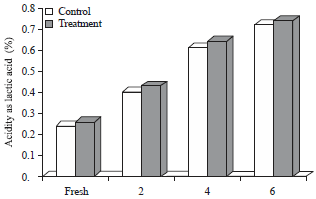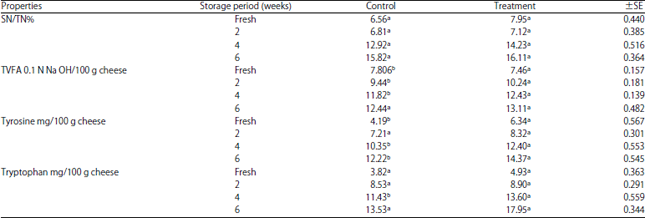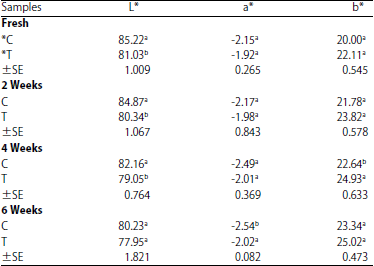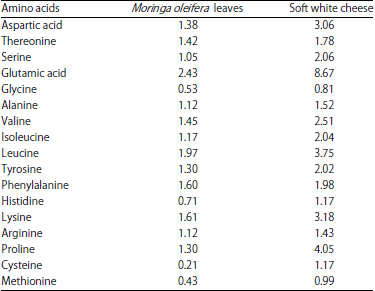Research Article
Utilization of Moringa oleifera Leaves Powder in Production of Soft White Cheese
Department of Dairy Science, National Research Centre, P.O. Box 12622, Dokki, Giza, Egypt
A. K. Enab
Department of Dairy Science, National Research Centre, P.O. Box 12622, Dokki, Giza, Egypt
Mona A.M. Abdel-Gawad
Department of Dairy Science, National Research Centre, P.O. Box 12622, Dokki, Giza, Egypt
Hala M. Bayoumi
Department of Dairy Science, National Research Centre, P.O. Box 12622, Dokki, Giza, Egypt
Y. B. Youssef
Department of Dairy Science, National Research Centre, P.O. Box 12622, Dokki, Giza, Egypt










